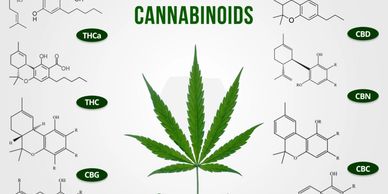Signed in as:
filler@godaddy.com
Testing Services
Cannabinoids
Cannabinoids
Cannabinoids

Cannabinoids are chemical compounds found in cannabis, hemp and hops. These compounds, also known as phytocannabinoids, are found in the highest concentration in the flowering portion of the plant, specifically within the resin glands located on the flower. At GHAL, we test for 14 different cannabinoids.
Terpenes
Cannabinoids
Cannabinoids

Terpenes are the flavor and aroma compounds found in plant resins. There are thousands found in the plant kingdom and more than 100 known to be in cannabis alone. Terpenes are the chemical compounds that provide the aroma and flavor of cannabis varieties, such as earthy and spicy or sweet and fruity. Terpenes are known as the “fingerprint” of a cannabis strain. GHAL currently tests for 28 terpenes.
Pesticides
Cannabinoids
Residual Solvents
Pesticides are commonly used in agricultural production. Research shows that pesticides have negative impacts on health and wellness. As more research is conducted and published, specifically on the impact of pesticide inhalation, pesticide testing will continue to develop in the cannabis industry. We ensure our pesticide testing is accurate and legally defensible by utilizing two separate instruments, HPLC and LC-MS MS to perform a pesticide test. This gives our clients and consumers peace of mind.
Residual Solvents
Residual Solvents
Residual Solvents
Residual solvents are organic volatile chemicals used in the manufacturing or extraction process. In cannabis, they are used to extract cannabinoids or terpenes from the plant material. These solvents are often not completely removed by practical manufacturing or extraction processes. Therefore, testing for these chemicals is required in many industries, including cannabis.
Heavy Metals
Residual Solvents
Heavy Metals

Heavy metals are contaminants that originate from both manufacturing and soil contamination in agricultural production. Most consumer products intended for human use and sold in regulated markets are required to undergo heavy metals analysis in order to protect consumer safety. Puerto Rico requires all cannabis products undergo testing for Cadmium, Lead, Arsenic, and Mercury.
Microbiology
Residual Solvents
Heavy Metals
Microbiology is the study and analysis of microorganisms. As with many agricultural or manufactured consumer goods, contamination can occur with improper handling or production techniques. Exposure to these harmful microbiological contaminants can pose serious health risks. Microbiological testing ensures safe product reaches consumers, especially those with compromised immune systems. In California, cannabis must be tested for Salmonella, E.coli, Aspergillus species A. fumigatus, A. flavus, A. niger, and A. terreus.
Foreign Material
Foreign Material
Foreign Material
Foreign materials are items that are typically unwanted in the production of food or products, such as stems, insects, sand, dirt or other unwanted fragments. Foreign materials typically found in cannabis are dirt, sand, insects or soil. Puerto Rico requires laboratories to perform foreign material inspections that must not exceed acceptable limits.
Moisture Content
Foreign Material
Foreign Material

Moisture content is the amount of water in a sample, measured by weight. This is an important indicator for the likelihood of microbial and funga growth as well as the curing technique for cannabis flower. Some claim that moisture content affects the smooth or harsh experience when inhaling cannabis.
Mycotoxins
Foreign Material
Mycotoxins

Mycotoxins are toxic metabolic products from molds or fungi and are typically found in agricultural products. Mycotoxins can negatively impact health, most notably for the kidney, liver, and endocrine systems. In Puerto Rico, cannabis products intended to be consumed via inhalation are required to be tested for Mycotoxins. The total presence of Aflatoxin B1, B2, G1, G2 cannot exceed 20 ug/kg, and total Ochratoxin A cannot exceed 20 ug/kg.
Sampling
Product Development
Mycotoxins
The representative sampling of cannabis and cannabis products is the first step to ensure accurate test results and therefore the accurate labeling of those goods. If the sample collected does not properly reflect the entire batch of cannabis or cannabis goods, the test results will not be representative and therefore inaccurate. This can create issues for both cannabis businesses and consumers alike. At GHAL we pride ourselves on going above and beyond to ensure batches are sampled following a comprehensive sampling protocol to ensure accurate results and defensible data.
Product Development
Product Development
Product Development
GHAL is a valuable resource for product development. With years of testing experience, combined with nutraceutical and pharmaceutical product development experience, we continually push the industry forward by providing consulting on product development and production practices. This ensures cannabis goods are manufactured accurately and consistently. Our expertise ensures the successful development of new products and a competitive advantage for our clients.
Copyright © 2020 Green Hills Analytical Labs - All Rights Reserved.